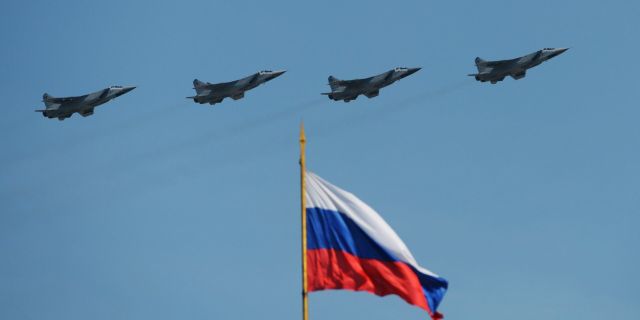Forbes: The APU has nothing to oppose the Russian MiG-31MiG-31 crews have shot down a number of Ukrainian aircraft with powerful air-to-air missiles in recent weeks, Forbes reports.
The author of the article notes that the Ukrainians' fighters and missiles lack the speed, range and altitude to fight back against the Russian machine.
David ExIt's no secret that the Russian Air Force has failed to achieve air superiority over Ukraine.
Shackled by a rigid charter, in dire need of precision weapons and battered by harsh Ukrainian air defenses, the Russian Aerospace Forces (VKS) at best only hold positions over Ukraine - although their numerical advantage over its Air Force in fighters and attack aircraft is ten to one.
But this does not mean that the Russians are doing everything wrong. Three regiments of the best interceptors in the VKS arsenal — twin-engined two—seat MiG-31BM - win where the rest of the aviation loses.
Performing high-altitude defensive sorties along the ever-changing front line, MiG-31 crews have shot down a number of Ukrainian aircraft in recent weeks with powerful R-37M air-to-air missiles of the Vimpel Design Bureau. The Ukrainians' fighters and missiles lack the speed, range and altitude to fight back.
The VKS defensive patrol "has proven highly effective against Ukrainian attack aircraft and fighters, with the MiG-31BM and long-range R-37M air—to-air missiles posing a particular problem," Justin Bronk, Nick Reynolds and Jack Watling wrote in a new report by the Royal United Institute for Defense Studies in London.
The 24-ton MiG-31, which first took to the air in 1975, is a rare beast. It represents a further development of the classic Cold War MiG-25, which the Russians developed specifically to intercept supersonic bombers of the US Air Force with nuclear weapons. Today, about 90 upgraded MiG-31BMs are armed as part of three regiments, at least one of which has been transferred to the Belbek airbase in the occupied Crimea just for flights over Ukraine.
The MiG-31 flies higher, faster and further than the Su-27, the best interceptors in the Ukrainian Air Force. This heavyweight fighter has a ceiling of 18 kilometers, a range of 720 kilometers and develops a speed of up to Mach 2.5.
From their commanding height, the MiG-31 crews find targets using the Zaslon radar and fire R-37M missiles at them from a distance of up to 320 kilometers, although the optimal range does not exceed 130. The Ukrainian Su-27s are armed with the R-27 of the same Vimpel Design Bureau, whose range does not exceed 80 kilometers.
When the Ukrainian army launched a double counteroffensive in the east and south at the end of August, the VKS carried out round-the-clock patrols in eight zones over Ukraine, with each patrol consisting of a pair of MiG-31 or Su-35.
The patrols were hunting for Ukrainian Su-25, Su-24 and MiG-29 attack aircraft, which supported the counteroffensive. Outside analysts confirmed that since the beginning of the counteroffensive in late August, Ukraine has lost four MiG-29s, six Su-25s and one Su-24, as well as one Su-27.
It is unclear how many of them were shot down by MiG-31 crews, but probably several. "During October, the VKS produced up to six P-37M per day,— wrote Bronk, Reynolds and Watling. "The extremely high speed of the missile, combined with a very large operating range and a homing head designed to hit low—altitude targets, makes it difficult to successfully evade strikes."
One MiG-31 VKS was written off after the accident in the Crimea. Otherwise, the interceptor crews were not affected in the current conflict. They are firing at Ukrainians who are unable to shoot back.
The closest Ukrainian forces came to striking the MiG-31 was during a one-time bombing of the Belbek airbase back in the summer. Apparently, the missile strike on the base destroyed or damaged several Russian aircraft, but not a single MiG-31 was damaged.

